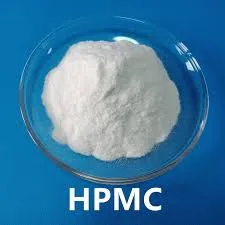
Dec . 15, 2024 06:12 Back to list
hydroxypropyl methylcellulose
Hydroxypropyl Methylcellulose A Versatile Polymer in Modern Applications
Hydroxypropyl methylcellulose (HPMC) is a synthetic polymer derived from cellulose, a natural polymer abundantly found in plant cell walls. Renowned for its versatility and unique properties, HPMC has gained widespread use across various industries, including pharmaceuticals, food, cosmetics, and construction. This article explores the composition, properties, applications, and advantages of HPMC, highlighting its significant role in contemporary formulations.
Composition and Properties
HPMC is produced by chemically modifying cellulose, specifically through the substitution of hydroxyl groups with hydroxypropyl and methyl groups. This modification not only enhances its solubility in water but also improves its stability under varying pH conditions. HPMC is available in various grades, characterized by different degrees of substitution, molecular weights, and viscosity. The ability to manipulate these parameters allows formulators to tailor HPMC for specific applications.
One of the most notable properties of HPMC is its film-forming ability. When dissolved in water, HPMC forms a viscous solution that can be applied to surfaces, creating a smooth, flexible film upon drying. Furthermore, HPMC exhibits excellent gel-forming characteristics, making it an essential substance in gel formulations. Its thermal stability and non-toxicity further enhance its appeal, especially in the pharmaceutical and food sectors, where safety and efficacy are paramount.
Applications
1. Pharmaceutical Industry In pharmaceuticals, HPMC is primarily utilized as an excipient, a substance that aids in the drug formulation process. It is commonly used in tablet formulations to improve tablet integrity and release characteristics. The ability of HPMC to form gels makes it ideal for sustained-release formulations, allowing for gradual drug release over extended periods, which can improve patient compliance. Additionally, it serves as a binding agent in granules and tablets, ensuring uniformity and stability in formulations.
2. Food Industry HPMC is widely recognized for its role as a food additive, classified as E464 in the European Union. It is commonly used as a thickening agent, emulsifier, and stabilizer in various food products. Its ability to enhance texture and mouthfeel makes it an attractive ingredient in gluten-free and low-fat food formulations. HPMC’s excellent water retention properties also aid in extending the shelf life of baked goods, ensuring freshness over time.
hydroxypropyl methylcellulose

3. Cosmetics and Personal Care The cosmetics industry utilizes HPMC for its film-forming and thickening properties. It is commonly found in lotions, creams, and shampoos, where it contributes to product consistency and stability. HPMC's ability to retain moisture enhances the performance of skin care products, making it a popular ingredient in formulations aimed at hydration and skin protection.
4. Construction and Building Materials In the construction sector, HPMC is used as a modifier in cement and gypsum-based products. Its inclusion improves workability and extend the open time of adhesives and mortars, making the application process easier and more efficient. The water-retention properties of HPMC also ensure good adhesion and reduce the risk of cracking, contributing to the durability of constructions.
Advantages
The popularity of HPMC can be attributed to several advantages it offers. Firstly, its versatility allows it to be adapted for various applications, adjusting viscosity and solubility as needed. Secondly, being non-toxic and biodegradable makes HPMC an environmentally friendly choice compared to synthetic alternatives. Moreover, its stability under a wide range of temperatures and pH conditions adds to its utility, as it can perform effectively in diverse environments.
In addition, the increasing demand for natural and safe ingredients in food and cosmetic products positions HPMC as a preferred option in an industry moving toward sustainability. As consumers become more conscious of what they incorporate into their bodies and surroundings, HPMC's low-allergen and non-irritating properties align well with current trends.
Conclusion
In conclusion, hydroxypropyl methylcellulose is a remarkable polymer with diverse applications spanning multiple industries. Its unique properties, including solubility, film-forming capability, and non-toxic nature, make it an invaluable ingredient in pharmaceuticals, food, cosmetics, and construction. With continued innovations and expanding applications, HPMC is poised to play a significant role in the development of modern products that meet the evolving needs and preferences of consumers. As research continues to unveil new potential uses, HPMC will likely remain a staple in numerous formulation strategies across various fields.
-
Versatile Hpmc Uses in Different Industries
NewsJun.19,2025
-
Redispersible Powder's Role in Enhancing Durability of Construction Products
NewsJun.19,2025
-
Hydroxyethyl Cellulose Applications Driving Green Industrial Processes
NewsJun.19,2025
-
Exploring Different Redispersible Polymer Powder
NewsJun.19,2025
-
Choosing the Right Mortar Bonding Agent
NewsJun.19,2025
-
Applications and Significance of China Hpmc in Modern Industries
NewsJun.19,2025







